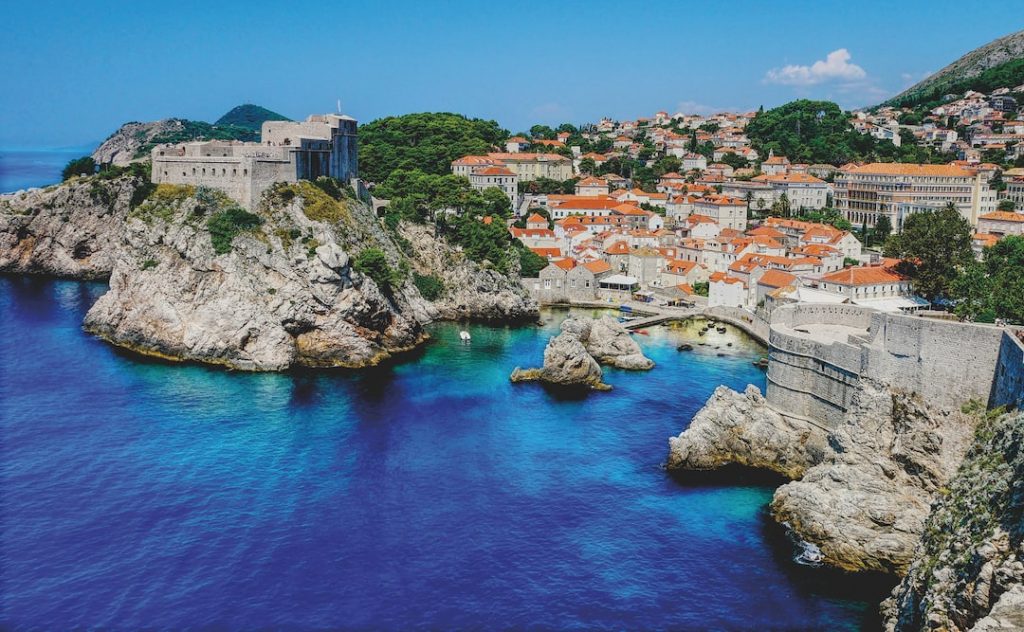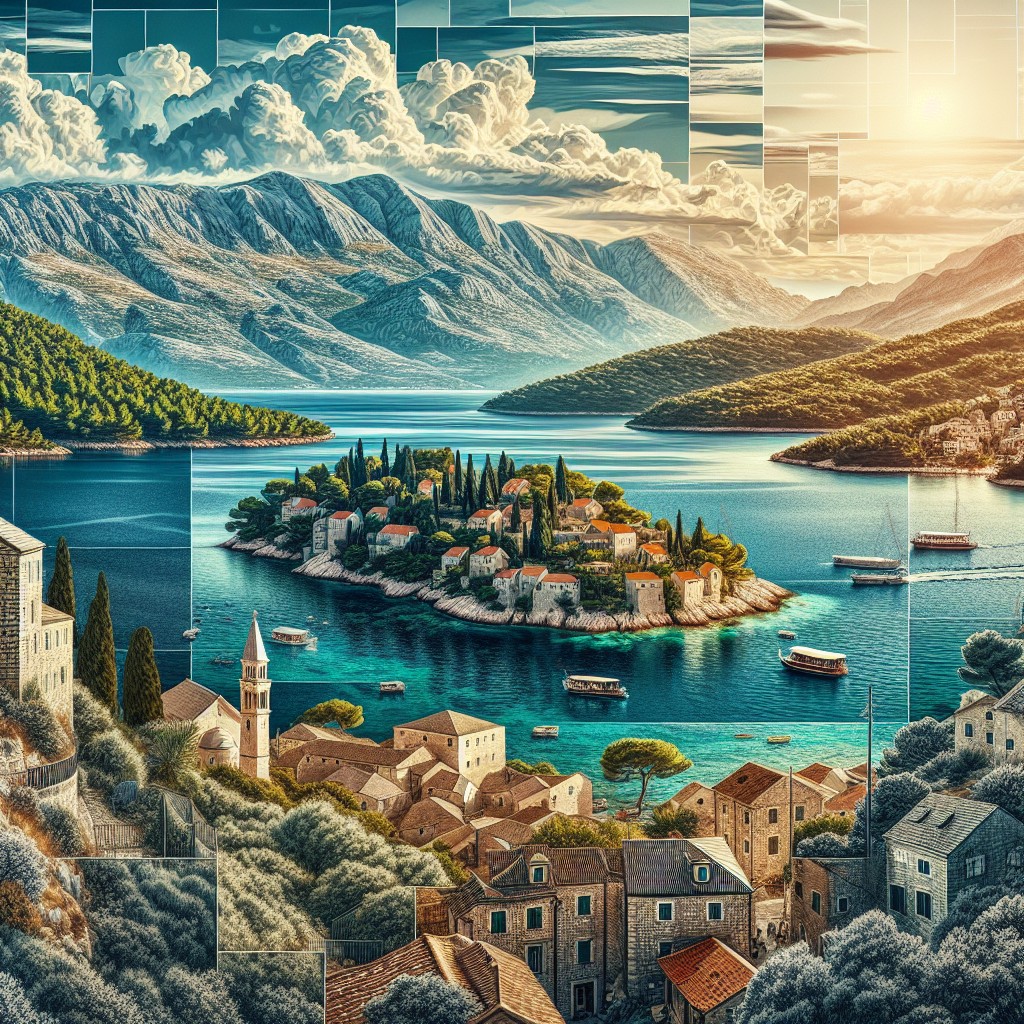Croatia, located in Southeast Europe, has a rich and complex history that spans thousands of years. From its early settlements to its modern-day status as a member of the European Union, understanding Croatia’s past is crucial in comprehending its present. This article will provide a comprehensive overview of Croatia’s history, highlighting key events and periods that have shaped the country.
Summary
- Croatia’s early settlements date back to the Neolithic period, with evidence of human presence found in the Danube basin and on the Adriatic coast.
- The arrival of the Croats in the 7th century marked the beginning of the Croatian state, with the establishment of the Duchy of Croatia under Tomislav in the 10th century.
- The Kingdom of Croatia in the Middle Ages saw the country’s expansion and cultural development, with the introduction of Christianity and the Glagolitic script.
- The Ottoman Empire and the Habsburg Monarchy had a significant impact on Croatia’s history, with the country being divided and ruled by different powers for centuries.
- The rise of nationalism in the 19th century led to the formation of the Illyrian Movement and the Croatian National Revival, which aimed to promote Croatian language and culture.
- World War I and the formation of Yugoslavia brought Croatia under a new state, which was initially seen as a positive development but later led to tensions and conflicts.
- World War II and the Independent State of Croatia were marked by atrocities committed against minorities, including Jews, Serbs, and Roma.
- Tito’s Yugoslavia and the Croatian Spring saw some liberalization and decentralization, but also repression of dissent and nationalism.
- The Croatian War of Independence in the 1990s resulted in Croatia’s independence and the establishment of a democratic, market-oriented system.
- Croatia’s path to EU membership and modernization has been marked by economic and social reforms, as well as challenges related to corruption, inequality, and regional disparities.
The early settlements in Croatia
Before the arrival of the Croats in the 7th century, Croatia was inhabited by various Illyrian tribes. These tribes, which included the Liburnians, Dalmatians, and Pannonians, had their own distinct cultures and languages. The Illyrians were heavily influenced by the Romans, who conquered the region in the 1st century BC. Roman influence can still be seen today in the numerous archaeological sites and ruins scattered throughout Croatia.
The arrival of the Croats in the 7th century
In the 7th century, the Croats migrated from their homeland in present-day Poland and settled in what is now modern-day Croatia. They established their own state and adopted Christianity as their religion. The Croatian state flourished under various rulers, including King Tomislav who united much of Croatia and was crowned as the first king in 925 AD.
The Kingdom of Croatia in the Middle Ages
During the Middle Ages, Croatia was a kingdom with its own distinct culture and identity. However, it was also closely tied to Hungary through a personal union. The relationship between Croatia and Hungary was complex, with periods of cooperation and conflict. The Hungarian kings often sought to exert control over Croatia, leading to tensions between the two kingdoms.
The Ottoman Empire and the Habsburg Monarchy
In the 15th and 16th centuries, Croatia faced numerous invasions from the Ottoman Empire. The Ottomans conquered large parts of Croatia, including the capital city of Zagreb. However, the Habsburg Monarchy, which ruled over much of Central Europe, eventually pushed back the Ottoman forces and regained control over Croatia. Under Habsburg rule, Croatia experienced a period of stability and economic growth.
The rise of nationalism in the 19th century
In the 19th century, nationalism began to emerge in Croatia. Croatian intellectuals and politicians sought to promote Croatian culture and language, and to assert Croatia’s independence from Hungary. This period saw the rise of prominent Croatian figures such as Ljudevit Gaj and Ante Starčević, who played key roles in shaping Croatian national identity.
World War I and the formation of Yugoslavia
During World War I, Croatia was part of the Austro-Hungarian Empire. After the war, the empire collapsed and a new state called the Kingdom of Serbs, Croats, and Slovenes was formed. This new state, later renamed Yugoslavia, aimed to unite the South Slavic peoples under one country. However, tensions between different ethnic groups within Yugoslavia would eventually lead to its dissolution.
World War II and the Independent State of Croatia
During World War II, Croatia was occupied by Nazi Germany. The Nazis established the Independent State of Croatia, which was led by the fascist Ustasha regime. The Ustasha regime carried out horrific atrocities against Serbs, Jews, and other minority groups. The establishment of the Independent State of Croatia remains a dark chapter in Croatian history.
Tito’s Yugoslavia and the Croatian Spring
After World War II, Yugoslavia was reestablished under communist rule led by Josip Broz Tito. Tito’s Yugoslavia sought to create a unified socialist state that would respect the rights of all ethnic groups. However, tensions between different republics within Yugoslavia remained, including between Croatia and Serbia. In the 1970s, a movement known as the Croatian Spring emerged, calling for greater autonomy and rights for Croatia. The movement was eventually suppressed by the Yugoslav government.
The Croatian War of Independence in the 1990s
In the early 1990s, Yugoslavia began to disintegrate. Croatia declared independence in 1991, but this move was met with resistance from the Yugoslav People’s Army and Serbian paramilitary forces. The Croatian War of Independence ensued, resulting in widespread destruction and loss of life. The war ended in 1995 with a Croatian victory and the establishment of the modern-day Republic of Croatia.
Croatia’s path to EU membership and modernization
Since gaining independence, Croatia has made significant strides in its path towards European integration. In 2013, Croatia became a member of the European Union, marking a major milestone in its history. The country has also undergone significant modernization efforts, with improvements in infrastructure, education, and healthcare. However, challenges still remain, including corruption and economic inequality.
In conclusion, Croatia’s history is a complex tapestry of different cultures, influences, and struggles for independence. From its early settlements to its modern-day status as a member of the European Union, understanding Croatia’s past is crucial in comprehending its present. By learning from its history, Croatia can continue to build a prosperous and inclusive future for its citizens.
FAQs
What is the history of Croatia?
Croatia has a rich and complex history that dates back to the 7th century. It was once part of the Roman Empire, and later became a kingdom under the rule of the Croatian Kings. In the 16th century, Croatia became part of the Habsburg Empire, and in the 20th century, it was part of Yugoslavia. Croatia declared independence in 1991 and has been a sovereign state ever since.
What were the major events in Croatia’s history?
Some of the major events in Croatia’s history include the arrival of the Croats in the 7th century, the establishment of the Croatian Kingdom in the 10th century, the Ottoman invasion in the 16th century, the Austro-Hungarian rule in the 19th century, and the declaration of independence in 1991.
What is the culture of Croatia?
Croatia has a diverse culture that is influenced by its history and geography. The country has a rich tradition of music, dance, and art, and is known for its cuisine, which includes seafood, meat dishes, and pastries. The people of Croatia are also known for their hospitality and love of sports, particularly football.
What is the economy of Croatia?
Croatia has a mixed economy that is based on services, industry, and agriculture. The country is known for its tourism industry, which is a major source of revenue. Other important industries include shipbuilding, food processing, and textiles. Croatia is also a member of the European Union and has access to the EU’s single market.
What is the political system of Croatia?
Croatia is a parliamentary democracy with a president as the head of state and a prime minister as the head of government. The country has a multi-party system, and elections are held every four years. The Croatian Parliament is made up of two chambers: the House of Representatives and the House of Counties.


